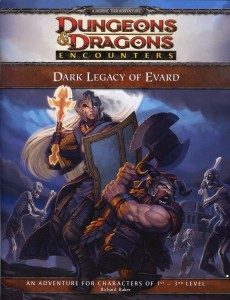 Next Saturday, August 6, is D&D Game Day. This year D&D Game Day happens to coincide with GenCon. However, this was an intentional choice made by Wizards of the Coast in order to run Game Day tables in Indianapolis. So no matter if you’re at GenCon or at your local FLGS, everyone can participate in D&D Game Day: Gates of Neverdeath.
Next Saturday, August 6, is D&D Game Day. This year D&D Game Day happens to coincide with GenCon. However, this was an intentional choice made by Wizards of the Coast in order to run Game Day tables in Indianapolis. So no matter if you’re at GenCon or at your local FLGS, everyone can participate in D&D Game Day: Gates of Neverdeath.
Anyone who’s planning to play in the upcoming season of D&D Encounters beginning on Wednesday, August 10 should make an effort to participate in Game Day. The Game Day adventure, Gates of Neverdeath is a prelude to D&D Encounters: Lost Crown of Neverwinter. PCs run on Game Day can be ported over to D&D Encounters with whatever XP, equipment and magical items they earn.

